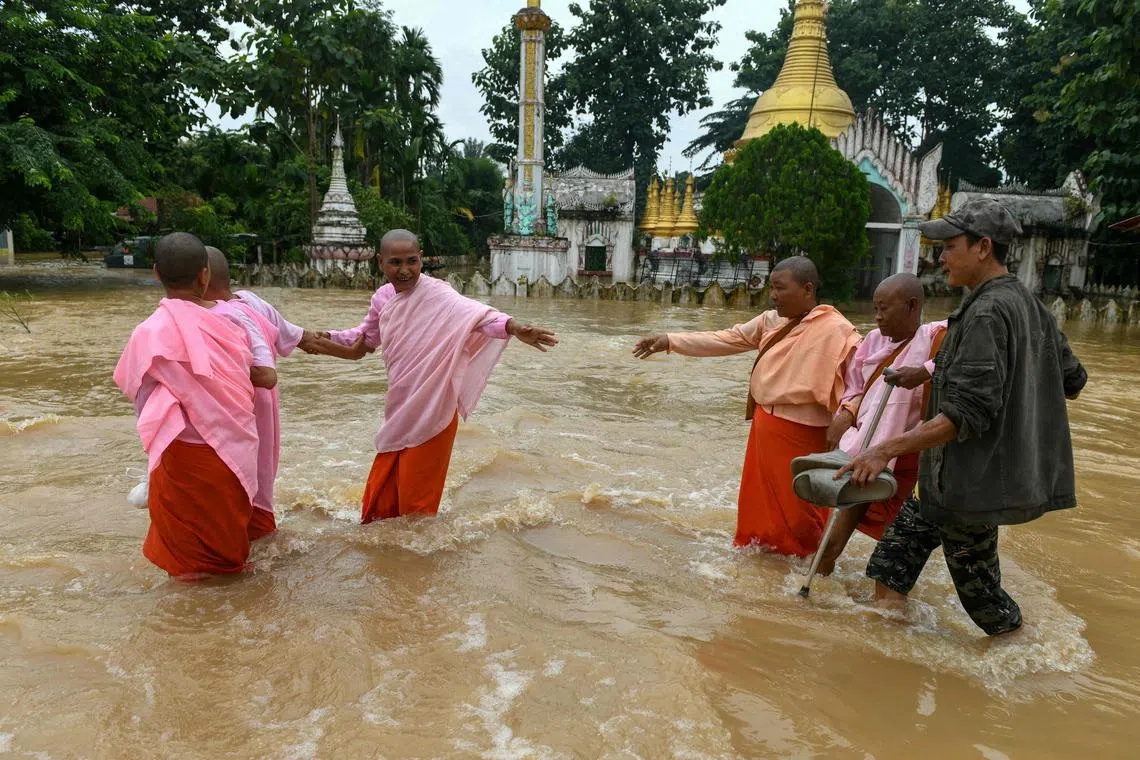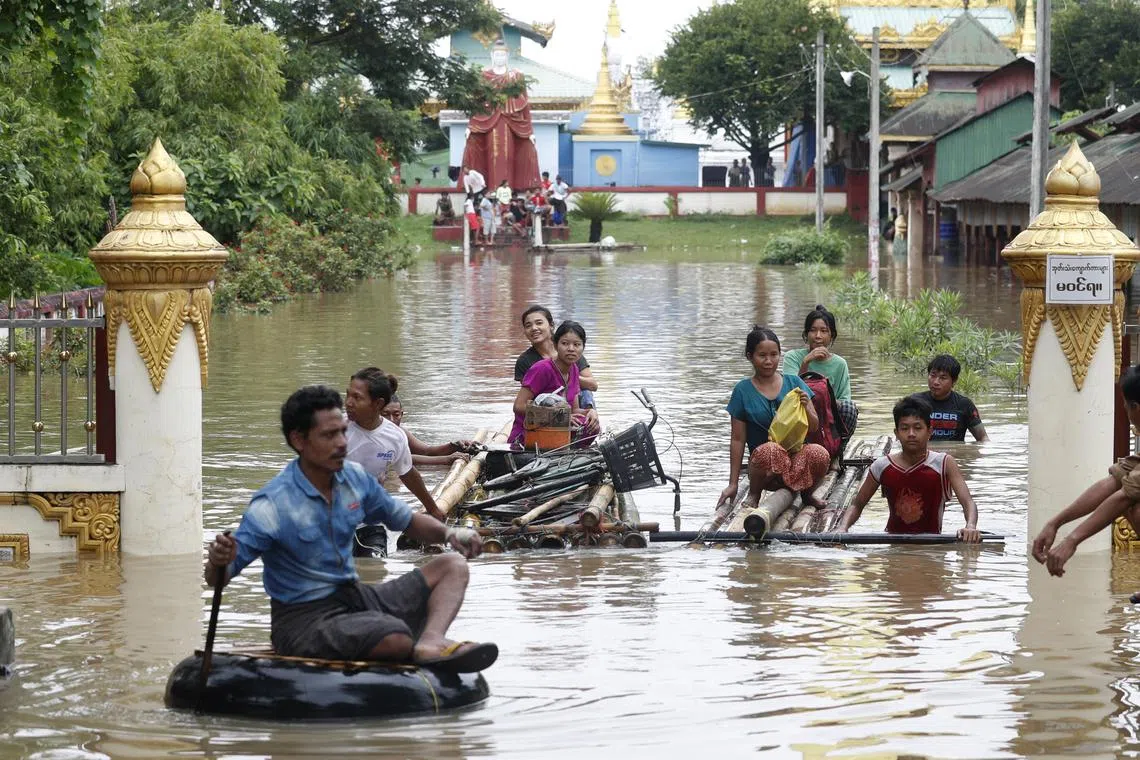Volunteers rush to help as Myanmar flood toll surges
Sign up now: Get insights on Asia's fast-moving developments

Swathes of farmland have been inundated in central regions, including around the sprawling, low-lying capital Naypyitaw.
PHOTO: AFP
Follow topic:
YANGON - Volunteers rushed to areas inundated by floods in Myanmar on Sept 15, as the country’s death toll from the Typhoon Yagi deluge more than doubled and remote areas reported increasing numbers of dead and missing.
Floods and landslides have killed almost 350 people in Myanmar, Vietnam, Laos and Thailand in the wake of Typhoon Yagi, which hit the region a week ago, according to official figures.
The death toll in Myanmar in the wake of Yagi jumped to 113, and more than 320,000 people have been displaced to temporary relief camps, the ruling junta said on Sept 15.
One man told AFP how he had tried to rescue people with ropes, as flood waters 4m high surged through the hill town of Kalaw, in Shan state, on Sept 10.
“The current was very strong, and even some buildings were destroyed,” he said, describing pieces of furniture being washed through the streets.
“I could see trapped families in the distance standing on the roofs of their houses,” said the man, who works for a local non-governmental group.
“I heard there were 40 bodies in the hospital,” he added.
A businesswoman in Yangon who runs a company in Kalaw told AFP her staff there had reported that nearly 60 people had been killed in the town.
The junta has not specified how many of the people it says have died in the floods were in Kalaw.
Around 30km away, in the tourist hot spot of Inle Lake, flood levels on Sept 14 had risen to the second storey of houses built on stilts above the water, according to one man there helping to evacuate his family.
In some areas near the lake, “whole villages have been submerged”, he said on Sept 15, asking to remain anonymous.
“The elders say this is the highest level of flooding they have seen,” he said.
Locals had “lost food such as rice and salt”, he added.
“Now, people are drinking rain water. There will be no water once that is gone.”
AFP images showed flood waters high against the wooden houses on the lake.
Cars and trucks carrying volunteers were streaming north from commercial hub Yangon to reach affected areas in Taungoo in the Bago region, and around the capital Naypyitaw, AFP reporters said.
The vehicles were loaded with pallets of bottled water, bundles of clothes and dried food, while some had boats strapped to their roofs.
“We want to help anyone who needs help at the moment. That is why we arranged to go to the flooding area,” said one woman heading for Taungoo.
“We brought food, water and some clothes.”

Flood victims wading through flood waters with a makeshift raft during the flood in Taungoo, Bago division, Myanmar, on Sept 14.
PHOTO: EPA-EFE
More misery
The floods have added to people’s miseries in Myanmar, where millions have already been displaced by more than three years of war since the military seized power in 2021.
The deluge has left 113 dead and 64 people missing as at the evening of Sept 14, according to state media, and more than 320,000 displaced.
But with roads and bridges damaged, as well as phone and internet lines down, information has been limited.
The Sittaung and Bago rivers, which flow through central and southern Myanmar, were both still above dangerous levels on Sept 15, state media said, although water levels were expected to fall in the coming days.
In the east, the Thanlwin River was more than 2m above its danger level in the state capital Hpa-an on Sept 14, state media reported.
Thailand’s weather office warned on Sept 15 of further heavy rain in provinces along the Mekong River.
The authorities in Vietnam on Sept 15 gave an updated toll of 281 dead and 67 missing.
Request for aid
Myanmar’s junta chief made a rare request for foreign aid
The military has previously blocked or frustrated humanitarian assistance from abroad.
In 2023, it suspended travel authorisation for aid groups trying to reach around a million victims of powerful Cyclone Mocha that hit the west of the country.
On Sept 14, the UN’s Office for the Coordination for Humanitarian Affairs in Myanmar and the International Committee of the Red Cross said they could not currently comment on the junta’s request.
Heavy monsoon rains lash South-east Asia every year, but human-made climate change is causing more intense weather patterns that can make destructive floods more likely.
Climate change is causing typhoons to form closer to the coast, intensify faster and stay longer over land, according to a study published in July. AFP, REUTERS

